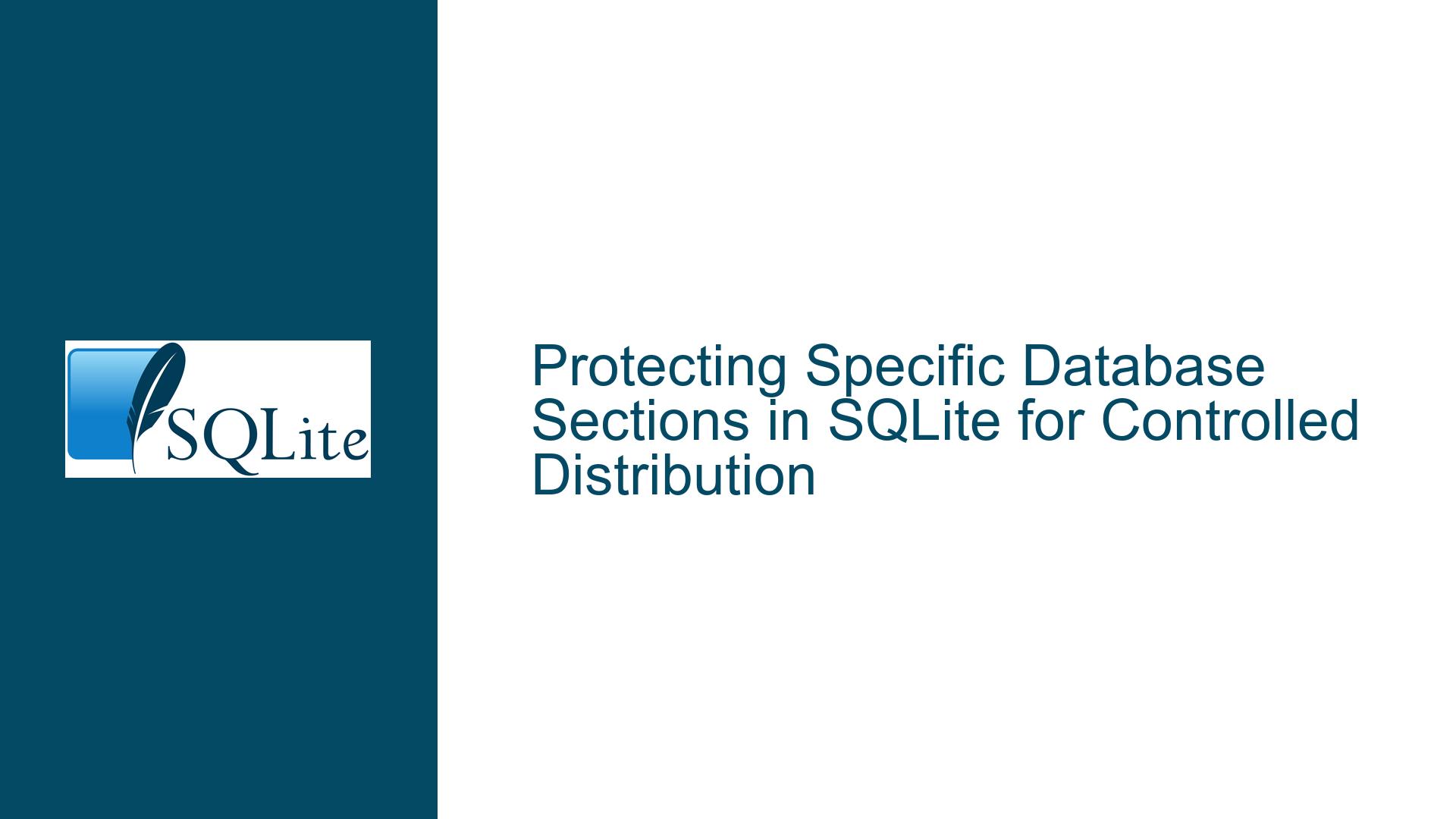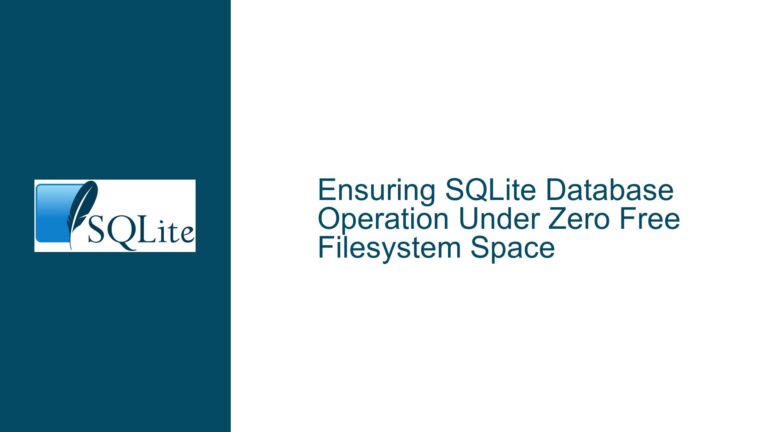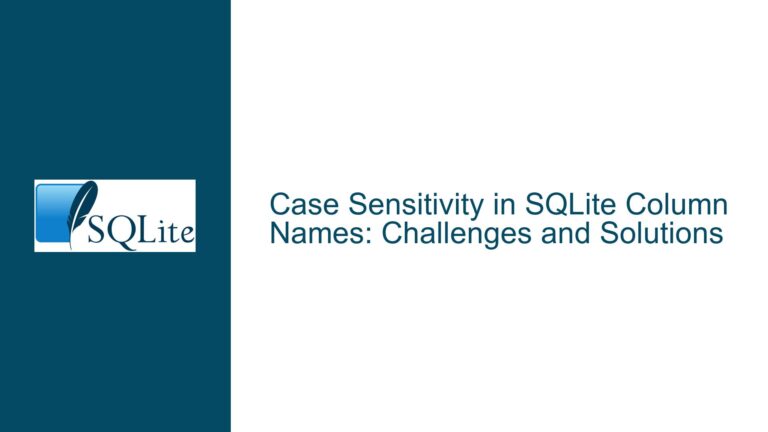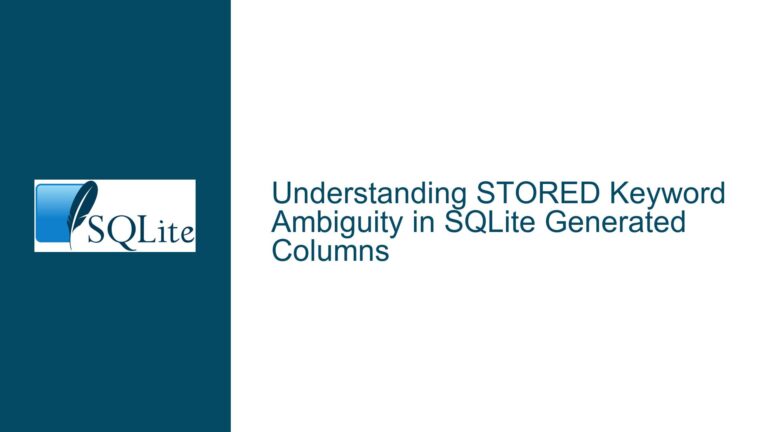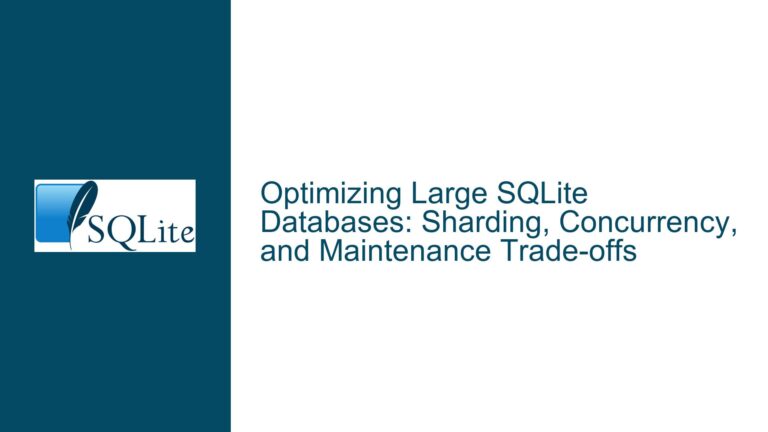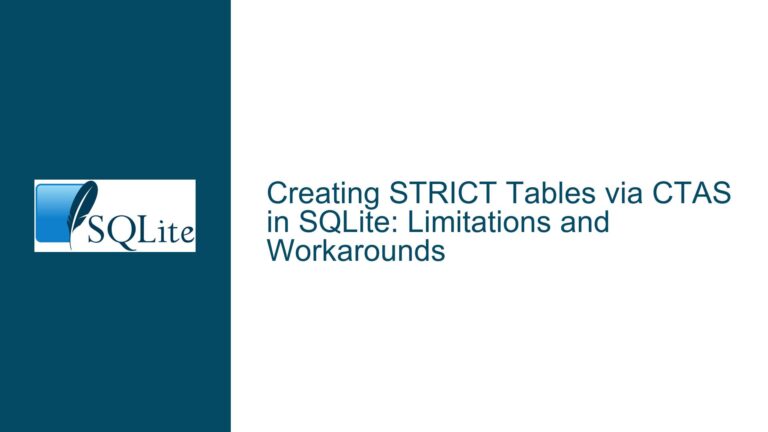Protecting Specific Database Sections in SQLite for Controlled Distribution
SQLite Database Protection for Controlled Editing and Distribution
The core issue revolves around protecting specific sections of a SQLite database from unauthorized edits while allowing controlled modifications in other sections. This is particularly relevant in scenarios where a database is distributed to multiple users, and the creator wants to safeguard certain parts of the database (e.g., study modules) from being altered, while still permitting users to interact with and modify other parts (e.g., user notes and assessment results). The challenge lies in implementing a system that enforces these restrictions without relying on external tools or complex encryption mechanisms that might hinder usability.
SQLite, being a lightweight, serverless database, does not natively support user-level permissions or access control mechanisms found in more robust database systems like PostgreSQL or MySQL. Therefore, the solution must be implemented at the application level, leveraging SQLite’s extensibility and features such as triggers, authorizers, and custom VFS (Virtual File System) implementations. The goal is to create a system where the database can be distributed with certain sections "locked" from editing, while still allowing users to interact with and modify other parts of the database through a controlled interface.
Interrupted Write Operations Leading to Index Corruption
The primary challenge in implementing such a system is ensuring that the protection mechanisms cannot be easily bypassed by users with direct access to the database file. SQLite’s architecture allows for direct file manipulation, meaning that any user with access to the database file can potentially modify its contents using external tools or even a simple text editor. This makes it difficult to enforce restrictions purely at the database level, as any attempt to lock specific sections of the database can be circumvented by directly editing the file.
One of the key issues is that SQLite does not provide built-in support for row-level or column-level access control. While it is possible to use triggers or the sqlite3_set_authorizer() function to enforce certain restrictions, these mechanisms can be bypassed by users who have direct access to the database file. For example, a user could disable triggers or modify the database schema to remove or alter the protection mechanisms. Additionally, any attempt to obfuscate or encrypt parts of the database must be carefully designed to ensure that it does not interfere with the normal operation of the database or make it difficult for legitimate users to access and modify the data they are permitted to edit.
Another challenge is ensuring that the protection mechanisms do not introduce significant performance overhead or complexity into the application. SQLite is often chosen for its simplicity and efficiency, and any solution that adds significant complexity or reduces performance may not be suitable for all use cases. Therefore, the solution must strike a balance between providing adequate protection and maintaining the simplicity and performance that make SQLite an attractive choice for many applications.
Implementing PRAGMA journal_mode and Database Backup
To address these challenges, a multi-layered approach can be employed, combining several SQLite features and application-level controls to create a robust protection system. The following steps outline a potential solution:
1. Database Schema Design for Controlled Access
The first step is to design the database schema in a way that clearly separates the protected data from the data that users are allowed to modify. This can be achieved by placing the protected data in separate tables or columns that are distinct from the user-modifiable data. For example, the study modules could be stored in a table called study_modules, while user notes and assessment results could be stored in a separate table called user_data.
By separating the data in this way, it becomes easier to enforce access controls at the application level. The application can be designed to only allow modifications to the user_data table, while preventing any changes to the study_modules table. This can be achieved by using the sqlite3_set_authorizer() function to restrict access to the protected tables or columns.
2. Using Triggers to Enforce Data Integrity
Triggers can be used to enforce data integrity and prevent unauthorized modifications to the protected data. For example, a trigger could be created that checks whether a user is attempting to modify a protected table or column and raises an error if the modification is not allowed. This can be combined with the sqlite3_set_authorizer() function to provide an additional layer of protection.
However, as mentioned earlier, triggers can be bypassed by users with direct access to the database file. To mitigate this risk, the application can be designed to periodically check the integrity of the database and verify that the triggers and other protection mechanisms are still in place. If any modifications are detected, the application can take appropriate action, such as disabling access to the database or alerting the user.
3. Obfuscation and Encryption of Critical Data
To further protect the protected data, it can be obfuscated or encrypted using application-level encryption techniques. For example, the study modules could be stored as encrypted blobs in the database, with the encryption key only known to the application. This would make it difficult for users to directly modify the protected data, even if they have access to the database file.
However, this approach has limitations, as it can make it difficult to query or search the protected data. To address this, the application can be designed to decrypt the data on-the-fly when it is needed, while still preventing users from modifying the encrypted data directly. This can be achieved by using SQLite’s user-defined functions (UDFs) to implement the decryption logic within the database.
4. Custom VFS for Enhanced Security
For applications that require a higher level of security, a custom VFS can be implemented to store the database in a non-standard format that is not easily accessible using off-the-shelf SQLite tools. This can make it more difficult for users to directly modify the database file, as they would need to reverse-engineer the custom VFS to understand how the data is stored.
However, implementing a custom VFS is a complex task that requires a deep understanding of SQLite’s internals. It also introduces additional complexity into the application, which may not be suitable for all use cases. Therefore, this approach should only be considered for applications that require a high level of security and are willing to accept the additional complexity and potential performance overhead.
5. Application-Level Controls and User Authentication
Finally, the application itself can implement additional controls to restrict access to the protected data. For example, the application could require users to authenticate before accessing the database, and only allow authenticated users to modify certain parts of the database. This can be combined with the other techniques described above to create a comprehensive protection system that prevents unauthorized modifications while still allowing legitimate users to interact with the database.
In conclusion, protecting specific sections of a SQLite database from unauthorized edits while allowing controlled modifications in other sections is a complex task that requires a multi-layered approach. By combining careful schema design, triggers, obfuscation, encryption, custom VFS implementations, and application-level controls, it is possible to create a robust protection system that meets the needs of most applications. However, it is important to carefully consider the trade-offs involved in each approach and choose the solution that best fits the specific requirements of the application.
